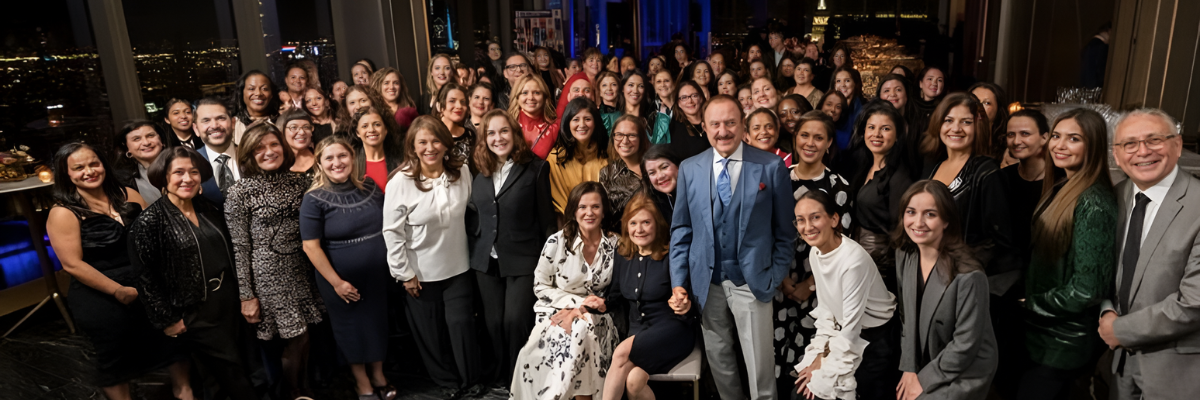
In Mexico, Día del Niño (Children's Day) is a commemorative day that honors children and promotes their well-being. Since 1925, the country has been celebrating children on April 30 through many different activities and events to entertain, educate, and bring joy to little ones. This day recognizes how important children are in society and also how essential it is to provide them with a healthy, well-adjusted childhood they can look back on. Día del Niño is also committed to promoting literacy through cultural activities and parent involvement.
On the topic of a healthy, well-adjusted childhood, we have to talk about the fact that not all children get that privilege. The ideal parent/child dynamic consists of parents providing the care children need so they can focus only on learning and enjoying the process of growing up. However, not all parents have the mental stability, emotional maturity, health, and/or resources to provide that, resulting in parentification.
Parentification 101

Parentification in the Latino community
In 2015, a study set out to examine the implications of race/ethnicity and gender on parentification. They worked with 977 college students who had a history of parentification and found that males had a higher level of parentification than females across all racial/ethnic groups. Moreover, they found that Latinos and Blacks had a higher level of parentification than white Americans.
Unfortunately, parentification is very common in the Latino community, especially among first-generation children of Latino immigrants. The most common example of parentification in the Latino community is the “translator child,” who serves as the language mediator between parents and the outside world. In this role, children get exposed to issues and information beyond their years. That may include legal problems, medical problems, debt, bills, and so much more.
@drlesliegonzalez And that’s on me not ever asking for help 🙃 #latinostiktok #hispanictiktok #tiktoklatino #latina #firstgen #generationaltrauma
Parentified children may also suffer from anxiety, depression, and even anger management issues throughout their lives. Moreover, because they didn’t have anyone to turn to for help during their formative years, they may develop ineffective coping skills, which affects how they interact with the world around them. Not just as children, but also as adults.
@micheline.maalouf Parentification can lead to so many issues with our own self, identify, worrh, and connection. Being a parentified child means we didnt really get to experience our childhood as children and sonwe didnt get to learn about ourselves and what we like and we didn’t learn that we were worthy despite our accomplishments and what we do for others #parentification #parentified #cptsd #trauma
Healing your parentified inner child
While the trauma of parentification is difficult, it doesn’t have to be a lifetime issue. The journey to healing from parentification is through inner work and therapy. In the Latino community, mental health is often stigmatized, but it’s important to break the code of silence around it and break the pattern to find healing.
The first step is the most difficult because talking about your childhood as a parentified child makes many feel guilty, ungrateful, and critical of their parents. However, loving and respecting your parents doesn’t mean it’s wrong to acknowledge the things they did that hurt you. Acknowledging them will allow you to understand your experiences in a way you weren’t able to as a child.
With understanding often comes the need for open communication with your parents. If you’re able or willing to seek those conversations, understand that they won’t be easy. Your parents will have a different perspective and they may (often inadvertently) try to invalidate your experiences by saying that they had it worse. If they do that, avoid seeing it as an attack and take it as an opportunity to ask them about it.
More often than not, parents also have trauma they need to heal from, and approaching the conversation with grace can help them as much as it can help you. Moreover, it’s important to create healthy boundaries with your parents. Parentified children often continue the role well into adulthood with their parents being highly dependent on them. Setting limits is part of your healing and breaking the habits you’ve been maintaining your entire life.
@drshantesays Honoring your parents doesnt give them license for mistreatment. Its okay to set boundaries to preserve your mental health. #mentalhealth #settingboundaries #healthyrelationship #relationship #mindset
It’s also essential to let go of the guilt of wanting to heal from parentification. It may feel like you’re abandoning your parents or being selfish or a bad daughter or son, but you’re not. You’re just working on balancing the scales, fixing your codependent relationship with your parents, and seeking your own freedom so you can live your life as an adult to the fullest.
@latinahermana To my First-Gens, daughter of immigrants, parentified children, it’s okay to put yourself first. 🫶🏽🤍 #firstgenlatina #hijamayor #latinastiktok #daughterofimmigrants #parentified #firstgenlatinaissues
On this Día del Niño, we encourage you to seek healing by acknowledging your parentified inner child and holding space for it. Also, we encourage you to celebrate children and champion their childhood in any way you can, whether you’re a parent, sibling, aunt or uncle, grandparent, godparent, etc.














